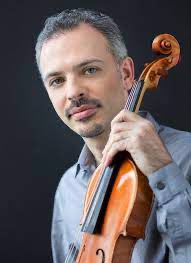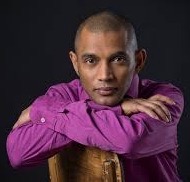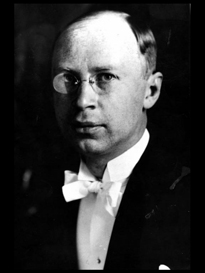Shakespeare and the Silk Road - May 14, 2022
These notes are interactive! Click the music notes throughout the text to hear examples of the music being discussed. Click the blue linked text to view a definition of the word.

Colin Jacobsen
Ascending Bird
Ascending Bird, composed in 2007, is a joint effort by composer and violinist Colin Jacobsen and Iranian composer and santur* player Siamak Aghaei, colleagues in the Silk Road Ensemble. It is an arrangement of an old Persian folk tune - a version of the phoenix myth - which tells the popular legend of a bird attempting to fly to the sun. After two failed attempts, the bird finally makes contact with the sun, losing its physical body in fire, and in this way achieving a metaphorical spiritual transcendence.
The music starts gently, and gradually ramps up by adding more instruments, leading to an ecstatic finish. The instrumentation is flexible, including traditional instruments whenever available.
A graduate of the Juilliard School and the Royal Conservatory of the Hague, Colin Jacobsen is a founding member of the innovative Brooklyn Rider String Quartet, as well as The Knights Chamber Orchestra. He is also since 2000 a touring member of Yo-Yo ma's Silk Road Project.
*The santur is a hammered dulcimer popular in Iran

Dinuk Wijeratne
Concerto for Tabla and Orchestra
The tabla is a pair of small drums of different sizes and shapes played with the fingers and palms, creating complex rhythms and a surprisingly wide range of sonorities. The tabla is most familiar to Western audiences as an essential feature of the Indian raga.
Sri Lanka born composer, pianist, conductor and tabla virtuoso Dinuk Wijeratne grew up in Dubai, studied music in the UK, USA and Canada, and now is based in Canada. He has composed for almost all the many artists and ensembles he has worked with, including Yo-Yo Ma's Silk Road Ensemble and tabla legend Zakir Hussain.
Wijeratne writes about the Tabla Concerto, composed in 2011:
"While the origins of the Tabla are somewhat obscure, it is evident that this 'king' of Indian percussion instruments has achieved global popularity for the richness of its timbre, and for the virtuosity of a rhythmically complex repertoire that cannot be separated from the instrument itself. In writing a large-scale work for Tabla and Symphony Orchestra, it is my hope to allow each entity to preserve its own aesthetic. Perhaps, at the same time, the stage will be set for some new discoveries.
"While steeped in tradition, the Tabla lends itself heartily to innovation, and has shown its cultural versatility as an increasingly sought-after instrument in contemporary Western contexts such as Pop, Film Music, and World Music Fusion. This notion led me to conceive of an opening movement that would do the not-so-obvious by placing the Tabla first in a decidedly non-Indian context. Here, initiated by a quasi-Baroque canon in four parts, the music quickly turns into an evocation of one my favourite genres of electronic music: 'Drum-&-Bass' characterised by rapid 'breakbeat' rhythms in the percussion. Of course, there are some North-Indian Classical musical elements present. The whole makes for a rather bizarre stew that reflects globalisation, for better or worse!
"A brief second movement becomes a short respite from the energy of the outer movements, and offers a perspective of the Tabla as accompanist in the lyrical world of Indian folk-song. Set in 'dheepchandhi', a rhythmic cycle of 14 beats, the gently lilting gait of the Tabla rhythm supports various melodic fragments that come together to form an ephemeral love-song.
"Typically, a Tabla player concluding a solo recital would do so by presenting a sequence of short, fixed (non-improvised) compositions from his/her repertoire. Each mini-composition, multi-faceted as a little gem, would often be presented first in the form of a vocal recitation. The traditional accompaniment would consist of a drone as well as a looping melody outlining the time cycle - a 'nagma' - against which the soloist would weave rhythmically intricate patterns of tension and release. I wanted to offer my own take on such a recital finale, with the caveat that the orchestra is no bystander. In this movement, it is spurred on by the soloist to share in some of the rhythmic complexity. The whole movement is set in 'teentaal', or 16-beat cycle, and in another departure from the traditional norm, my nagma kaleidoscopically changes colour from start to finish. I am indebted to Ed Hanley for helping me choose several 'gems' from the Tabla repertoire, although we have certainly had our own fun in tweaking a few, not to mention composing a couple from scratch.”

Sergey Prokofiev
Selections from the Ballet Suites of Romeo and Juliet, Op. 64.
Apolitical and appalled by the mayhem created by the Russian Revolution, Sergey Prokofiev left his native country in 1918, settling first in the United States and then in Paris. But he never felt comfortable on foreign soil. By 1933, homesickness was consuming him: "The air of foreign lands does not inspire me because I am Russian and there is nothing more harmful to me than to live in exile", he told a reporter in Paris. He was spending more and more time in Russia, although his family was still living in France. In 1936 he returned permanently to Moscow, aware that he would have to change his compositional style to satisfy Soviet cultural demands. He was never again able to travel abroad.
The idea of composing a ballet based on Shakespeare's Romeo and Juliet, a relatively "safe" lyrical subject, came to Prokofiev in the spring of 1935. A ballet on the same topic, written in 1925 by the English composer Constant Lambert for impresario Sergey Diaghilev's Ballets Russes, may have given him the idea.
After returning to the Soviet Union, Prokofiev received a commission for the ballet from the Kirov Ballet in Leningrad; when Kirov backed out, the Moscow Bolshoy Theater took it over. Prokofiev tried to adhere as closely as possible to Shakespeare's play, using both dance and mime to convey the story. When his innovative and complex score frightened the Bolshoy and the cast declared the music "undanceable", Prokofiev revised the score. Their insistence, however, that the ballet have a happy ending turned out to be more than he could stomach. Romeo and Juliet was dead in the water.
In the end, a hugely successful premiere took place in Brno, Czechoslovakia, in December 1938. Embarrassed, the Kirov took it on once again and after much wrangling, the ballet was finally premiered in Leningrad in January 1940. Galina Ulanova, the ballerina who danced Juliet, expressed the difficulties surrounding the production in a humorous parody of Shakespeare's epilogue to the play:
“There never was a story of more woe
Than Prokofiev's music for Romeo”
Romeo and Juliet is a long ballet with 52 numbers, but the rapid switches between dramatic and lyrical sections assure that the tension is maintained. One of the reasons for the ballet's immediate acceptance was the fact that by the time of the premiere, the music was already well-known. In view of the production delays, and never one to let good music go to waste, Prokofiev arranged two orchestral suites from the ballet score, which premiered in 1936 and 1937. During the same period he also made a piano arrangement of ten excerpts and performed them in Moscow. He assembled the Third Suite from the ballet in 1946.
It is common practice now for conductors to excerpt their own suites from the ballet. These suites, like Prokofiev's own, do not necessarily adhere to the logical sequence of the story but are combined to be musically balanced.
- The Montagues and Capulets combines sections of from Act I, in which the Duke forbids the two families, on the pain of death, to continue their feud,
with the heavy-footed dance scene from the ballroom scene of Act II.

- The Young Juliet describes the young girl, her interaction with her nurse, her mother and her reaction to her prospective marriage.

- Tableau; a short folkdance segment, introducing the Madrigal

- Madrigal describes the lovers' tender conversation from the ballroom scene of Act II.

- Masks follows the minuet in the ballet, the arrival of the masked Romeo and friends.

- Romeo and Juliet; the famous balcony scene reflects the initial shyness of the lovers that grows into a consuming passion.
The scene concludes with the whisper of their parting.

- Death of Tybalt; combines various sections of music from the end of Act II, including the duel with Romeo and Tybalt's death. The initial theme accompanies the skirmish (Leonard Bernstein learned a lot from this section).
Romeo stabs Tybalt about halfway through. The threnody that concludes the suite is the turning point of the tragedy.

- Romeo at Juliet's Tomb is from the concluding scenes of the ballet, including Juliet's funeral procession.

